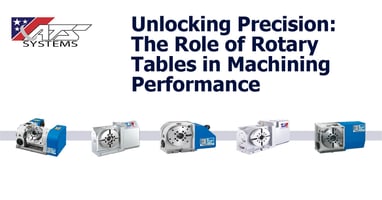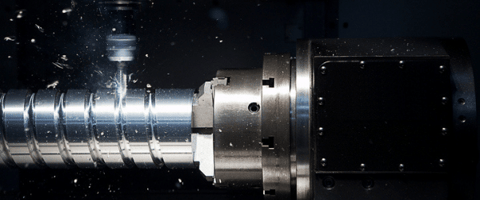In the world of machining, it is important to embrace innovation and stay ahead of the curve to...
ATS Systems Workholding Solutions
Workholding devices are vital in enabling precise and efficient machining operations. Here are some of the most common workholding devices and their advantages and disadvantages:
-
Three-Jaw Chuck:
The three-jaw chuck is the most commonly used in machine shops and is ideal for holding round or hexagonal workpieces. Its advantages include its simplicity, ease of use, and ability to grip workpieces quickly. However, it is less suitable for holding irregularly shaped workpieces and may cause workpiece distortion due to unevenly distributed clamping force. -
Four-Jaw Chuck:
The four-jaw chuck is versatile and can hold irregularly shaped workpieces. Its independent jaws allow for a more even distribution of clamping force, resulting in less workpiece distortion. However, setting up and aligning the jaws requires more time and effort. -
Collet Chuck:
The collet chuck is designed for holding small-diameter workpieces with high precision and accuracy. Its advantages include its ability to hold small workpieces without causing distortion and its ease of use. However, each workpiece size requires a different collet, which can be costly and time-consuming. -
Air Chucks:
Air chucks use compressed air to provide high clamping force, making them suitable for high-speed turning and grinding applications. They are quick and easy to operate and deliver consistent clamping force. However, they require a compressed air supply, and the maintenance and repair costs can be high. -
Steadyrests:
Steadyrests support long, slender workpieces during turning operations to prevent bending or flexing. They provide stability and improve machine accuracy. However, they are limited to holding only cylindrical workpieces and can be time-consuming to set up and align. -
Cylinder Systems:
Cylinder systems use hydraulic or pneumatic power to clamp and hold workpieces during heavy-duty applications. They provide a high clamping force and consistent pressure, making them suitable for large workpieces. However, they require a power supply and can be costly to maintain. -
The Ultimate Chuck by ATS Systems:
The Ultimate Chuck is a specialized chuck that combines the benefits of a three-jaw, four-jaw, and collet chuck into one device. It provides a secure grip and high accuracy for various workpiece sizes and shapes, reducing the need for multiple chucks. However, this type of chuck requires specific training for use, but it offers unique advantages that make it worth the investment.
In summary, selecting the suitable workholding device for the specific application is critical to ensuring efficient and accurate machining operations. Each has advantages and disadvantages, and machine shops should consider these factors when choosing the appropriate workholding solutions. Contact your ATS Systems Regional Manager for more information or to get a quote on your workholding needs.
.png)



